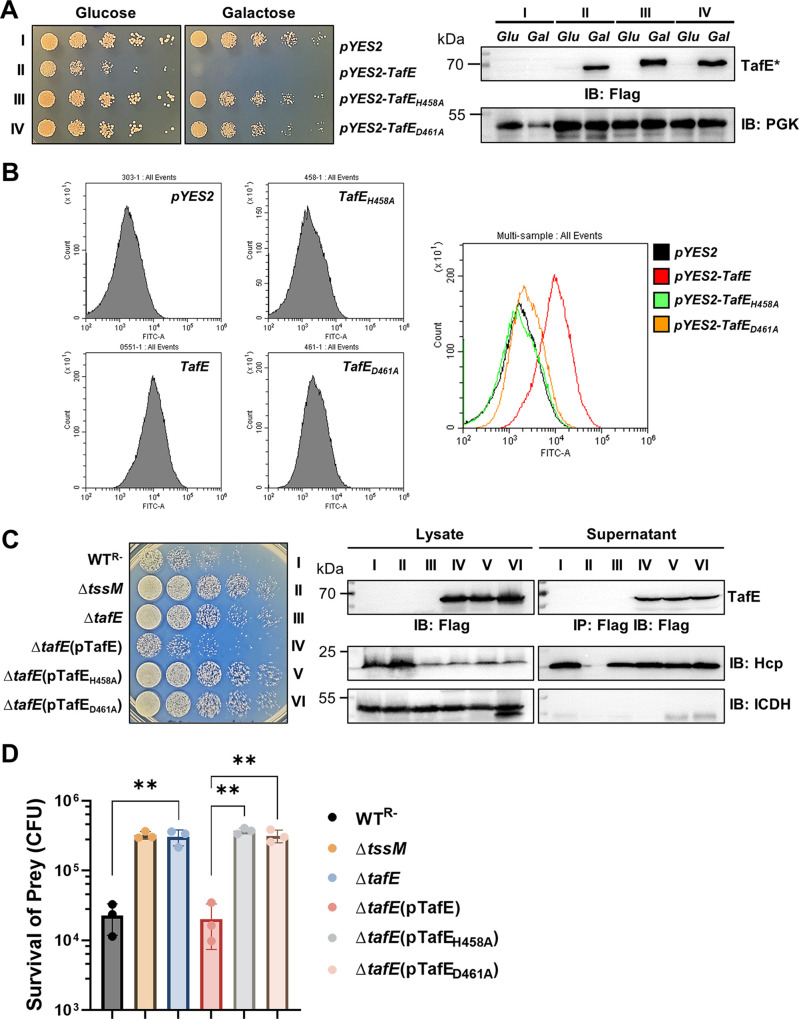FIG 4.
The DNase activity of TafE is essential for the yeast-killing ability of A. baumannii. (A) The HXXD motif is required for yeast toxicity of TafE. Cells of yeast strains harboring plasmids coding for the Flag-tagged TafE or mutants with disrupted HXXD motifs driven by the Pgal promoter were spotted onto medium containing glucose or galactose. Left, the growth was assessed by acquiring images after incubation at 30°C for 4 days. Right, the expression of the proteins in each strain was detected in lysates of cells grown in the indicated medium by immunoblotting with Flag-specific antibody. TafE* represents TafE or any of its mutants. (B) Yeast cell death caused by the expression of TafE or its mutants evaluated by fluorescence-activated cell sorting (FACS). After induction with galactose for 12 h, TUNEL-stained cells were analyzed by flow cytometry. (C, D) The integrity of the HXXD motif is important for A. baumannii to kill yeast. The ability of TafE or its HXXD mutants to restore the yeast killing ability of the ΔtafE mutant was determined as described in the legend to Fig. 1D. (C) Left, note that mutations in the HXXD motif abolished the ability of TafE to complement the ΔtafE mutant. Right, the functionality of the T6SS in indicated strains was determined by their ability to secrete Hcp, and the expression of TafE and its derivates was detected in lysates and culture supernatants by immunoblotting with Flag-specific antibody. (D) The results are from three independent experiments each done in triplicate; bars and error bars represent mean values for prey survival (CFU) ± standard deviations. IB, immunoblotting; IP, immunoprecipitation. **, P < 0.01.

